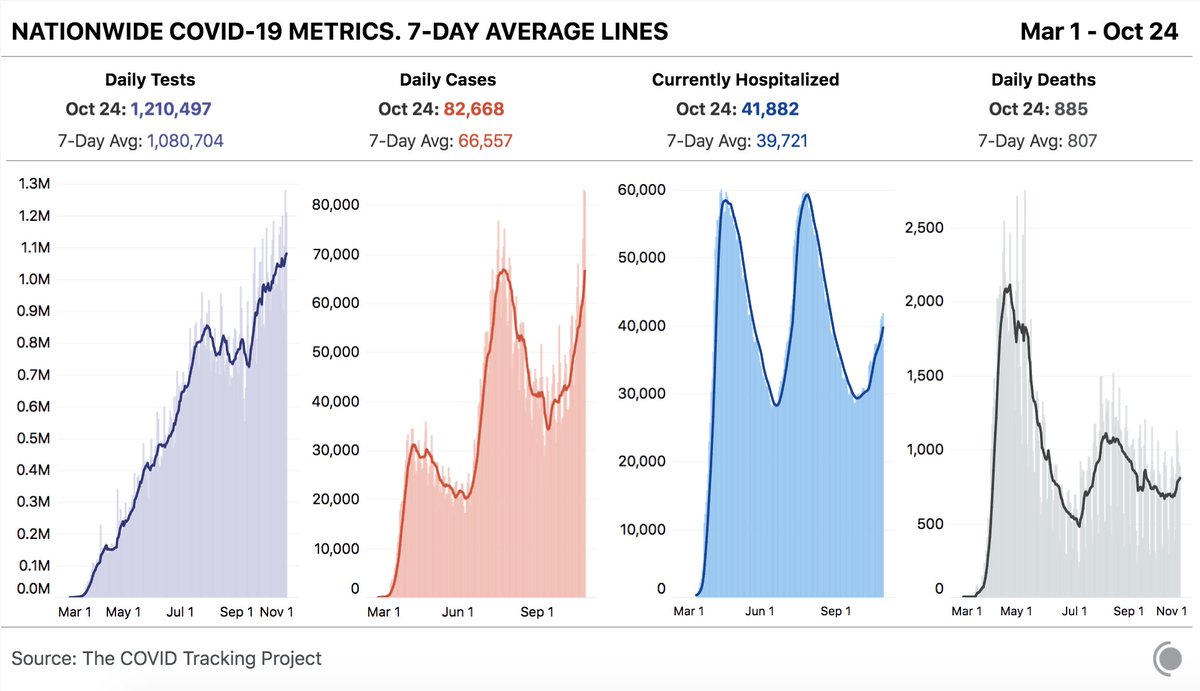
Our daily update is published. States reported 1.05 million tests, 73k cases, and 44,212 people hospitalized. The reported death toll was 931. 

We made a major improvement to our Florida data. We switched our TotalTestResults field to use a newly posted timeseries of testing encounters. This makes FL's data more comparable with other states—and captures a more comprehensive view of FL's testing utilization and strategy.
This change from counting unique people tested to testing encounters will result in an increase of 3.7 million tests in our cumulative topline total test number since March.
The previous data remains available in our API, but following our long-standing policy, this testing encounters data will become our new default number. Policy here: covidtracking.com/blog/counting-…
These charts compare daily reported tests using the two different metrics. While they have the same rough shape, there were far more test encounters over the last few months than new, unique people tested. 



Overall, Florida now accounts for ~7% of total tests now, as you can see in the chart below. This change will affect the numbers of API users who use the TotalTestResults field. We have a deeper explanation of these changes available, too: covidtracking.com/blog/good-news… 

• • •
Missing some Tweet in this thread? You can try to
force a refresh













